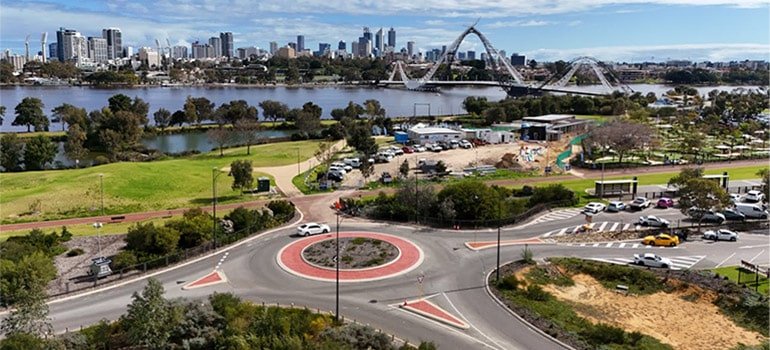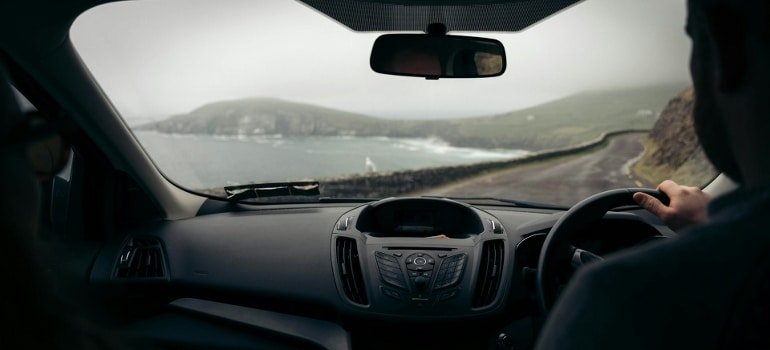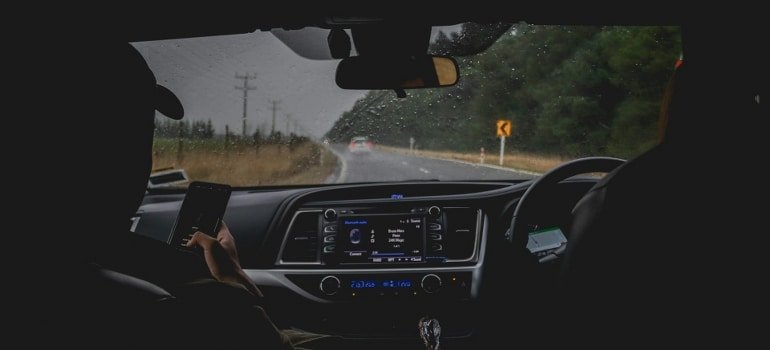How to Stay Safe With Left-Side Driving After Moving to Australia

Get a Free Moving Quote Now!
Start Your International Moving Journey





Moving to Australia brings exciting changes, but one of the first adjustments Americans face is getting behind the wheel on the left. This difference can feel intimidating at first, but with the right mindset, it becomes manageable. Working with international movers often puts safety first, and that same care applies to driving once you arrive. Learning how to handle local roads not only keeps you safe but also builds confidence. That’s why staying alert, practicing regularly, and understanding the details of traffic flow matter so much when you deal with left-side driving after moving to Australia.
How Do You Adjust At Intersections And Roundabouts?
Intersections and roundabouts are where most newcomers feel the biggest challenge. International household goods movers say that these traffic spots require extra patience and awareness because the natural instinct is to look the wrong way first. At roundabouts, you must always give way to vehicles already in the circle, and traffic moves clockwise instead of counterclockwise. Choosing the correct lane before entering is essential, especially when multiple exits are involved. In busy city areas, painted arrows on the road can guide you, but in rural regions, you must rely on memory.

The “Give Way” sign replaces the American “Yield,” and ignoring it can quickly lead to fines or worse. Practicing in smaller roundabouts first is smart, as it helps your brain adjust to scanning in the opposite direction. At intersections, take a second to double-check before turning, since right turns require crossing oncoming lanes and demand more care. Do you really want to risk assuming traffic flows like it does in the US?
What Should You Know About Road Rules And Speed Enforcement?
Australian authorities take speed control seriously, and penalties are steep for those who overlook them. International movers in NYC recommend that new residents familiarize themselves with posted limits as soon as they start driving because even a small mistake can lead to hefty fines. Urban speed zones are commonly set at 50 km/h (about 31 mph), while highways may allow 100 to 110 km/h (62–68 mph). School zones drop to 40 km/h (25 mph) during pick-up and drop-off hours, and cameras monitor compliance relentlessly.
Unlike in the US where officers may issue warnings, automated systems handle much of the enforcement here. License suspensions can occur after repeat offenses, which can disrupt work and daily life. It pays to understand that every kilometer over the limit has a consequence, and ignorance is never accepted as an excuse. Watching signs closely and keeping an eye on your speedometer are non-negotiable habits if you want to drive without stress.
How Do Car Setup Differences Affect Driving?
The car itself feels unfamiliar when you first climb in. International movers in NJ remind you that the steering wheel sits on the right, and the gearshift, turn signals, and wiper controls are mirrored compared to American vehicles. At first, it is common to accidentally flip on the wipers when you mean to signal a turn, and it can be embarrassing in traffic. This is why spending time in a parking lot to get comfortable with the setup helps. Even the driver’s perspective changes, since you now sit closer to the curb rather than the center line.

Passing other vehicles or judging distances when parking can feel awkward until you retrain your instincts. Some newcomers choose to rent cars with automatic transmission to simplify the adjustment, since shifting with the left hand can overwhelm beginners. Have you considered how much easier it becomes once your muscle memory adapts? The sooner you practice in low-pressure settings, the quicker the controls feel natural.
Why Does Pedestrian And Cyclist Awareness Matter So Much?
Australian cities make walking and cycling easy, which means drivers must share space with more than just cars. International movers often highlight that safety goes beyond the vehicle, and moving to Australia includes respecting pedestrians and cyclists at every turn. You must remember to check for foot traffic from the correct side, since looking the wrong way could cause an accident. Crosswalks are taken seriously, and pedestrians often step onto the road expecting vehicles to stop.
Cyclists also have designated lanes, and in some areas, they are legally allowed to ride two abreast. Ignoring these rules leads to penalties, and in worst cases, injuries that you will want to avoid at all costs. City driving demands patience, since traffic lights, bike paths, and tram crossings can appear one after another. It helps to plan routes in advance and expect delays. Keeping this in mind makes driving smoother, but also reinforces habits that keep everyone safe on crowded streets.
How Can You Build Practice And Confidence Safely?
The best way to feel comfortable is through gradual exposure. Approach driving like you approached relocating: step by step. Starting in quiet neighborhoods or suburban streets allows you to focus without the pressure of heavy traffic. Repeating basic routes helps your brain adjust to new patterns, while building muscle memory with turns and lane changes. Car rental companies sometimes offer short orientations for international drivers, which can help ease initial stress.

Another option is scheduling lessons with local instructors who specialize in teaching foreigners. The small investment pays off in confidence and safety. Have you thought about how much easier it feels once you spend consistent time behind the wheel? Avoid jumping straight into crowded Sydney or Melbourne roads without preparation. With patience you’ll find yourself handling freeways and downtown streets like a local.
Mastering Confidence With Left-Side Driving After Moving to Australia
Driving on the left does not need to be overwhelming if you prepare well and stay cautious. At first, roundabouts, strict speed laws, and different car layouts feel like major obstacles. Over time, with steady practice, they become part of daily life. Keeping pedestrians and cyclists in mind only makes you a better driver. With support from international movers, you already managed the logistics of your relocation, so managing traffic differences is simply the next step. Do you want to stress every time you get behind the wheel, or would you rather master the system and enjoy the freedom of safe travel? Stay patient, stay alert, and you’ll quickly discover that you can handle left-side driving after moving to Australia.
